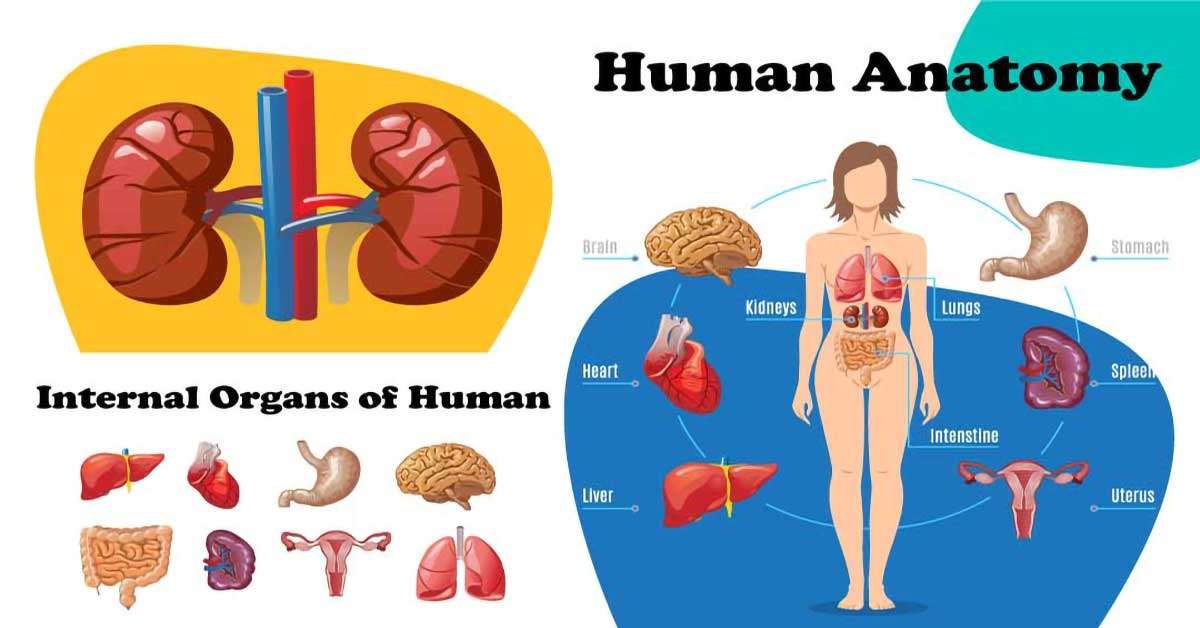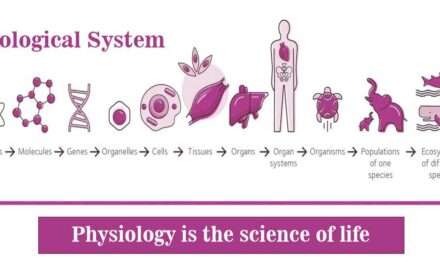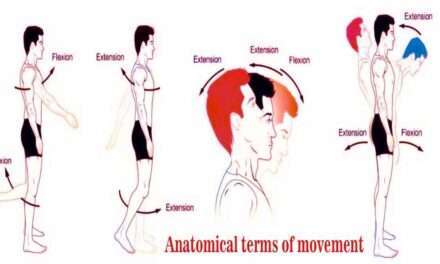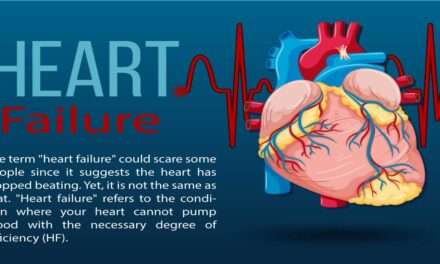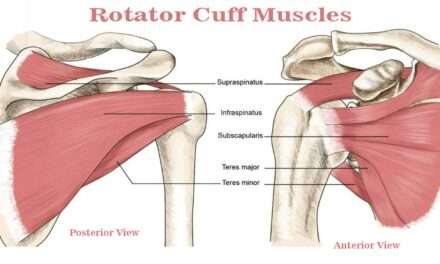Anatomy studies the structure and function of the human body, including its components and systems. Clinical anatomy studies the macroscopic structure and function of the human body as it relates to the practice of medicine and other health sciences. Anatomical terms are very important to learn and understanding anatomy.
Anatomical terms
The terminology that is used to describe the structures that can be found in different parts of the body must be understood by the students. Anatomical terms must be used to provide a meaningful description of the body’s composition. In addition, clinicians need to be familiar with these terms to accurately record any anatomic abnormalities discovered during a patient’s clinical examination. When medical professionals correctly use anatomic terms, they can better communicate with their peers within their own country and across international borders.
A medical dictionary will help the reader understand how much more effective he will learn anatomic terminology if he does so through comprehension rather than memorizing rote nomenclature. It is only possible to discuss or document abnormal joint movements, muscle contractions, changes in organ position, or the precise location of swellings or tumors in the body if one has a working knowledge of anatomical terms.
anatomical position
Understanding the standard geometric references that permit uniform, precise descriptions of the locations, relations, and movements of structures is essential because spatial orientation and organization are fundamental concepts in anatomy. These references allow for uniform, precise descriptions of structures’ locations, relations, and movements.
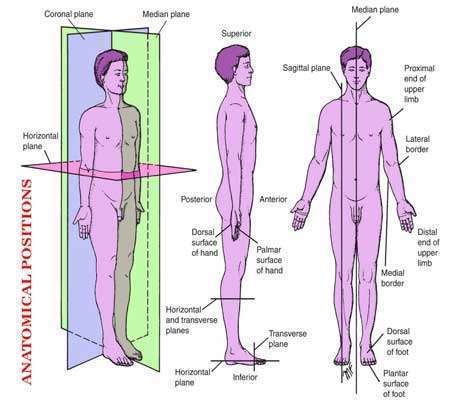
The anatomical position is the default reference posture that is assumed in all anatomical diagrams and illustrations of the human body. A person is in this position when they are standing tall and facing forward while their upper limbs are by their sides, their hands are facing forward with their palms up, their lower limbs are joined, their feet are flat on the ground, and their toes are pointing in the direction of movement. This body position will be used to describe all directions and movements from this point forward. The body is positioned so that it is affected by four geometric planes, three of which are perpendicular to the other planes.
Anatomical position terms
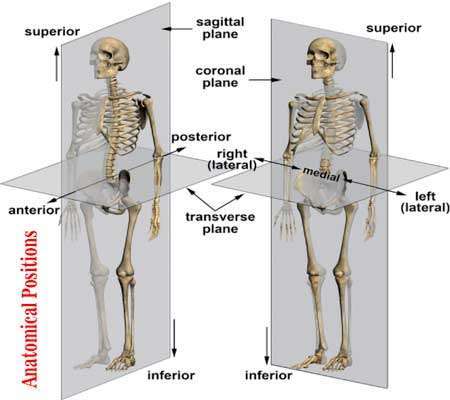
A vertical line that divides the body into its right and left halves evenly down the middle into two halves is called a median plane.
A sagittal plane is any plane perpendicular to the median plane that divides the body into unequal right and left portions.
The coronal plane, also well known as the frontal plane, is a vertical plane that cuts across the median plane at a 90-degree angle. The coronal plane runs through the middle of the body and separates the body into its anterior (front) and posterior (back) halves.
The median and the coronal planes have a relationship to the horizontal plane perpendicular to it. A horizontal plane runs through the middle of the body, dividing it into an upper and lower half. Because it is perpendicular to the structure’s longitudinal axis, a transverse plane can divide a particular structure into cross-sectional views.
There is much ambiguity between the terms “transverse plane” and “horizontal plane,” so they are frequently used interchangeably. However, they do not always correspond one to the other. Consider how the horizontal and transverse planes of the leg differ from those of the foot, as well as how the horizontal and transverse planes of the abdomen differ from those of the gut tube. It is important to remember that the structures in question can produce a wide variety of orientations depending on the planes in such areas.
Their respective anatomical terms refer to the body’s front and back: the anterior (ventral) and the posterior (dorsal). When describing the relationship between two structures, we can say that one structure is anterior to the other or posterior to the other depending on which one is physically closer to the front or back of the body (e.g., the nose is on the anterior side of the head, whereas the buttocks are on the posterior side of the body).
When describing the hand, the terms palmar and dorsal surfaces are used rather than the more traditional anterior and posterior designations. The top of the foot, known as the plantar surface, and the bottom of the foot, known as the dorsal surface, are referred to by their respective terms.
Compared to another structure, a structure is said to be medial if it is situated more closely to the body’s median plane than the other structure. In a manner analogous to this, it is said that one structure is lateral to another if it is situated at a greater distance from the median plane (e.g., in the head, the eyes are lateral to the nose, and the nose is medial to the eyes).
Superior (cranial; cephalic) and inferior (caudal) are terms that are used to refer to levels that are relatively high or low, and they are used when referring to the upper and lower ends of the body, respectively (e.g., the head is at the superior end of the body, whereas the feet are at the inferior end of the body).
The terms “proximal” and “distal” are typically used when describing locations concerning the center, root, or attached end of a reference point. Proximal is more distant from the core, whereas distal is further away (e.g., in the upper limb, the shoulder is proximal to the elbow, and the hand is distal to the elbow).
The terms “superficial” and “deep” describe different locations concerning the surface of a body or a particular structure. The distance between the deep and the surface is greater than that between the superficial and the surface (e.g., the skin is superficial to the ribs, but the heart is deep to the ribs).
The Interior and exterior of a building or room are divided into “internal” and “external” sections according to their proximity to the building’s or room’s center. Internal is located inside the building, whereas external refers to the area outside (e.g., the thoracic cavity is an internal space in the trunk of the body, whereas the skin is the external layer of the trunk).
Two terms are used to describe positions concerning a body side that is used as a reference. These terms are “ipsilateral” and “contralateral”. The side on the opposite side of the reference point from the ipsilateral side is the contralateral side (e.g., the right eye is ipsilateral to the right ear; however, the right eye is contralateral to the left ear).
When a person is lying on his back, they are said to be in the “supine position”, when he will be lying on his back when he assumes the “prone position”.
Two terms are used to describe the flow direction concerning a reference point. These terms are “afferent” and “efferent”. Afferent flow is moving in the opposite direction of efferent flow, which is flowing away from the reference point (e.g., venous blood flow is afferent to the heart, and arterial blood flow is efferent to the heart).

